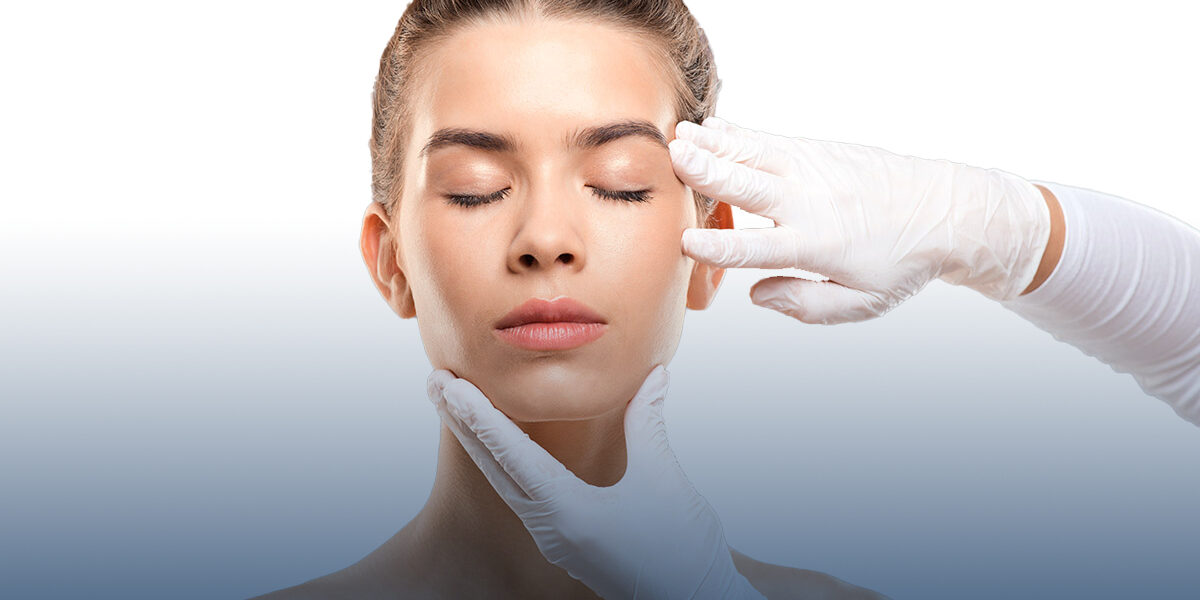
What is Rhinoplasty – Nose Job?
Rhinoplasty (Nose Job) is an operation to give the nose a more beautiful and aesthetic appearance. This procedure, which is used to treat structural defects in the nose, aims to correct the physical appearance of the nose.
This procedure, which is used to correct genetic, congenital or acquired deformities, has become increasingly popular in recent years. Rhinoplasty can also be used to correct aethetic and respiratory problems.
Why is Rhinoplasty (Nose Job) performed?
Rhinoplasty (Nose Job) generally deals with health problems in the nose that occur at birth or later. Deformities in a person’s nose can cause breathing problems. Rhinoplasty corrects this problem. Rhinoplasty can also be carried out for purely aesthetic reasons. Conditions requiring rhinoplasty:
– Curvature or dislocation of the bones of the nose
– Deformities in the cartilage structure
– A nose that is too large or too small
– A nose that is not symmetrical
– A pointed, drooping or upturned nose.
Who can have Rhinoplasty – Nose Job?
Rhinoplasty (Nose Job) is a preferred procedure for both health and aesthetic reasons. If a person wants to have rhinoplasty just to improve their appearance, the age of the patient is very important. As the cartilage structure of the nose continues to develop until the age of 15, this operation is not recommended for young people. For some people, the structure of the nose may make it necessary to be even older. However, if there are problems affecting the airways, the operation is carried out before the age of 15 as it is unavoidable.
Rhinoplasty (Nose Job) can be performed due to health problems in the nose, but it may not be appropriate due to some health problems. Due to some diseases and complications, this operation cannot be performed on everyone. One of them is body dysmorphic disorder (excessive prejudice about one’s own image) and rhinoplasty is not recommended for people with this operation. As excessive prejudices can cause psychiatric conditions such as depression and suicide in the person, this operation can lead to negative situations in the person. In such cases, rhinoplasty is not recommended for these patients or it should be carried out after undergoing tests.
People with sleep apnea should also undergo various tests and the operation should be performed by providing respiratory support with the relevant devices. Patients with bleeding disorders should be treated with caution.
What are the types of Rhinoplasty?
Types of rhinoplasty, which generally vary according to the patient’s wishes, are grouped into nose reduction, nose augmentation and procedures where both reduction and augmentation are performed together.
*Nose reduction: Nose reduction involves making localised reductions to the tip or top of the nose. In order to achieve the desired size or shape of the nose, the cartilage and bone parts of the nose are removed in specific proportions and the reduction procedure is carried out.
*Nose augmentation: Nose augmentation is the type of surgery performed as a result of congenital, post-nasal defects or faulty operations caused by events such as congenital, subsequent, impact or accident. Nose augmentation is performed to give people a more proportional and smoother appearance. This is an operation in which cartilage tissue is removed from the nose or a specific part of the body.
How is Rhinoplasty (Nose Job) performed?
Rhinoplasty (Nose Job) is a procedure that is decided upon after the doctor has examined the patient and identified the problem. After both the health and aesthetic examination, the doctor will provide the patient with detailed information about the operation he/she needs. The patient is also given information about how the nose will look after the operation. After the operation, it may be necessary to stay in hospital for 12 or 24 hours.
What is non-surgical Rhinoplasty?
As mentioned above, there are many alternative non-surgical methods that have recently emerged.
*Nose Filling:
It is used as a process to shape the gaps and asymmetric parts of the nose by filling. This method, whose effects are not permanent, is preferred by people who do not want to undergo surgery. The procedure is carried out in clinics and lasts between 5 and 10 minutes.
Before & After
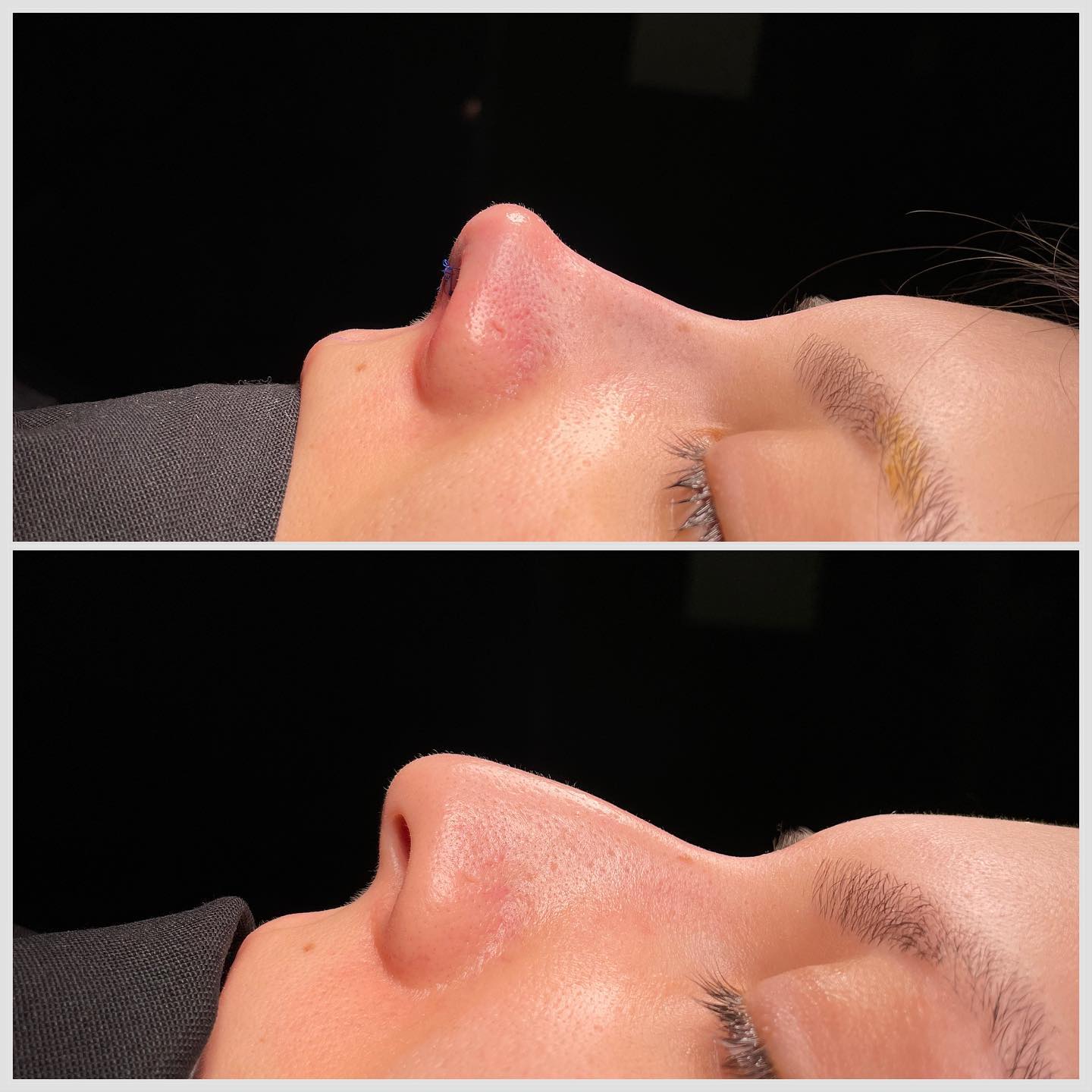
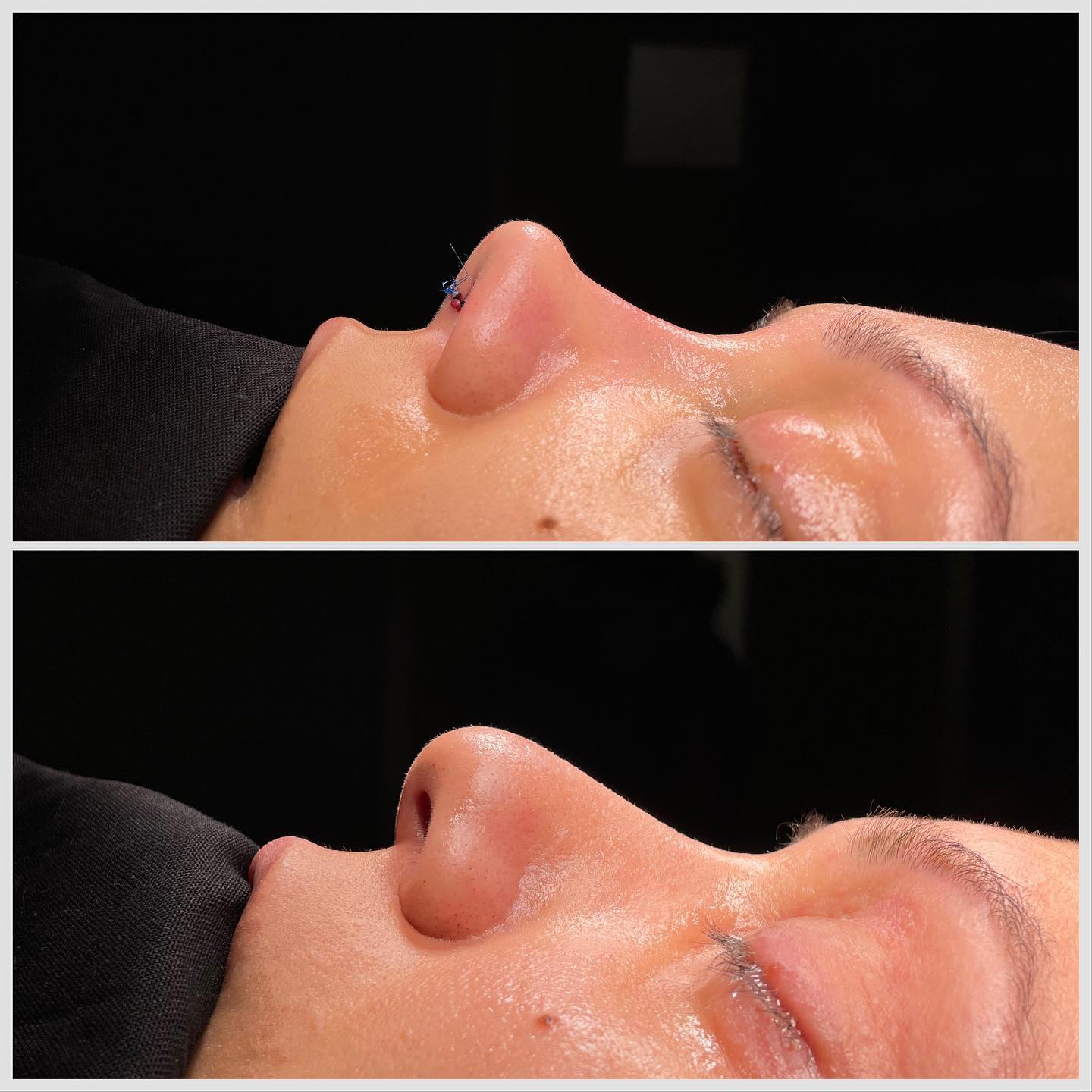
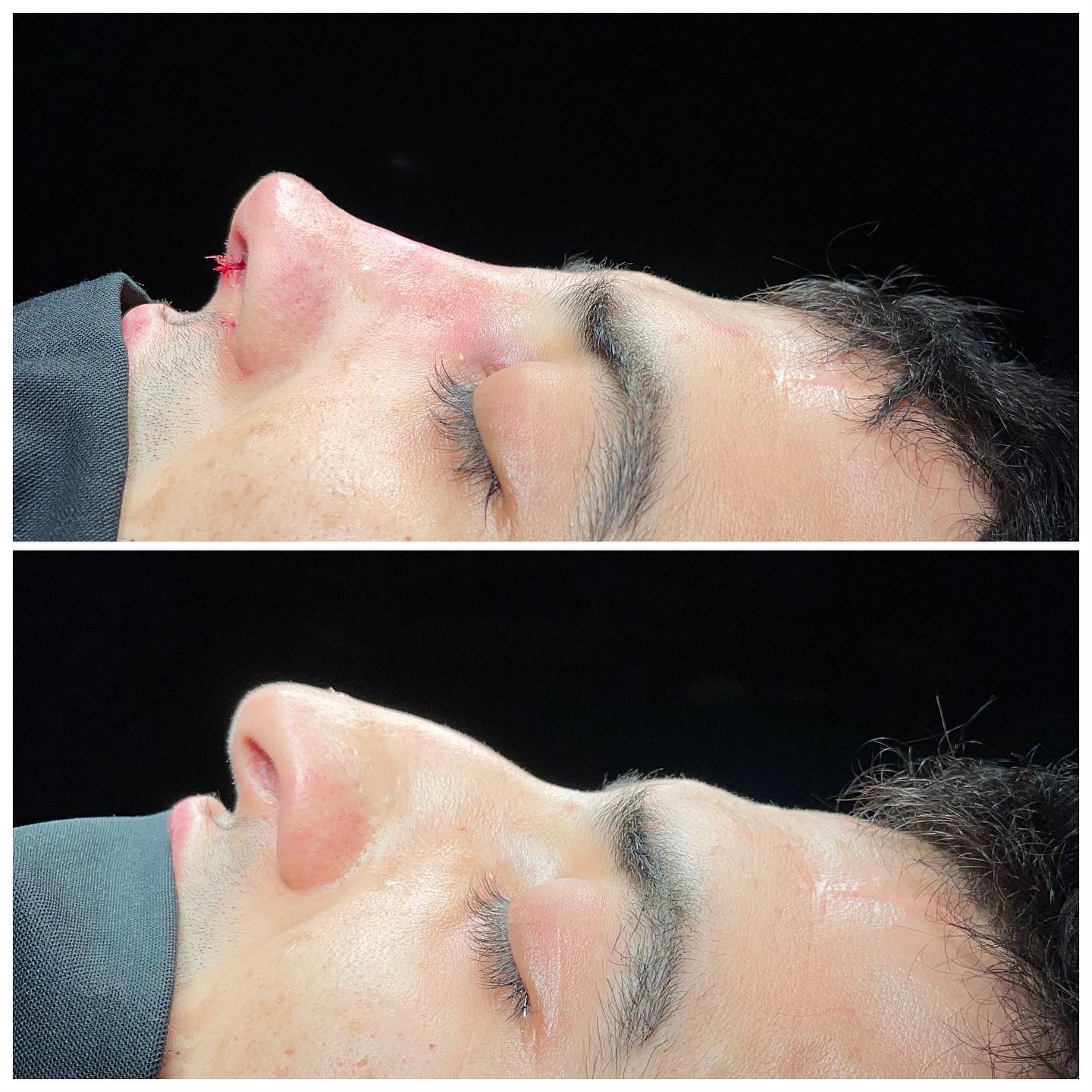
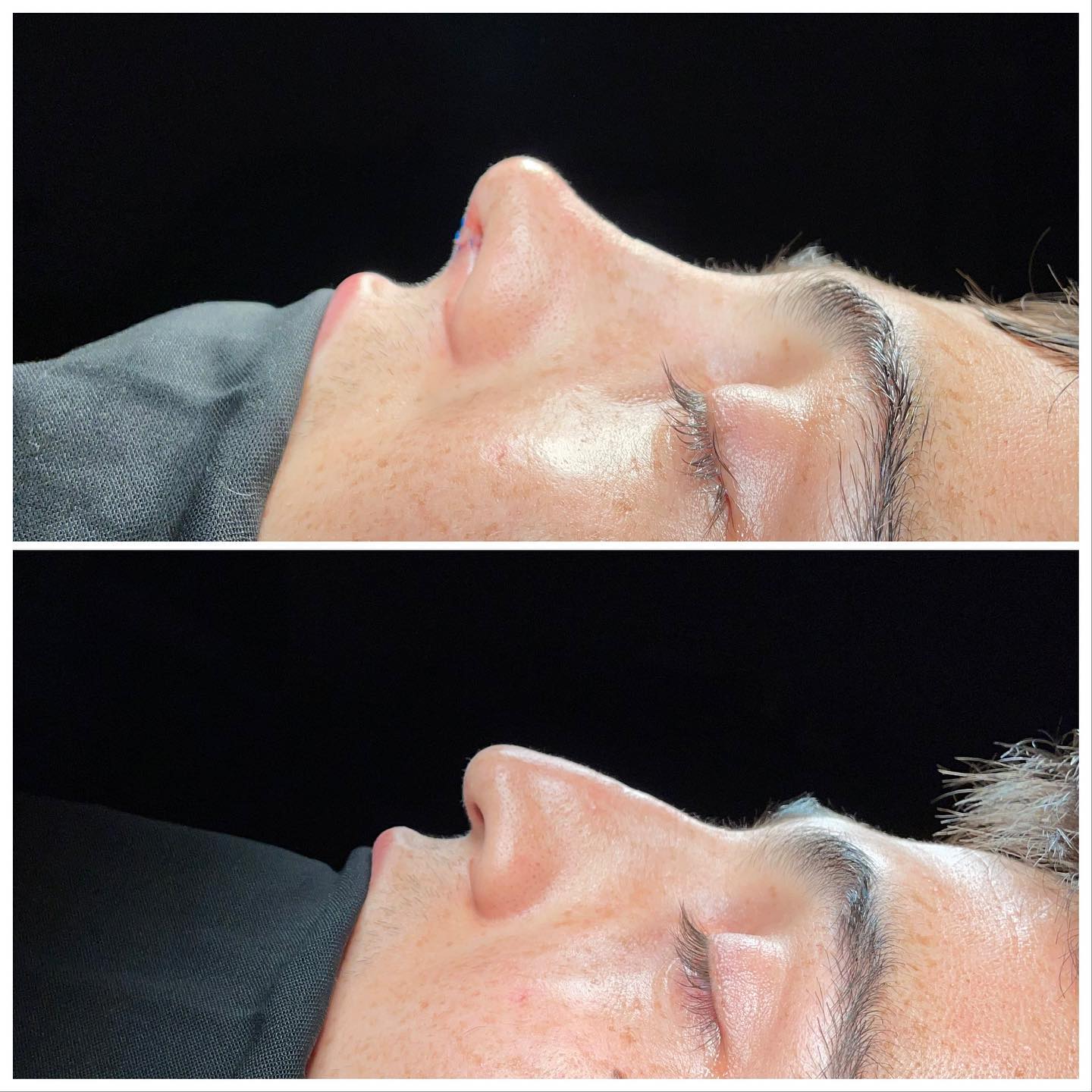
Frequently Asked Questions About Nose Aesthetics
There are several situations that should be considered after rhinoplasty. These situations are listed below:
- It is normal to have some pain after the operation and it is not a problem for the person to take painkillers. Besides, the medication given by the doctor should also be taken regularly.
- There may be some swelling and bruising in certain parts of the face, which will subside in time.
- Bruising and swelling will disappear within 15 days.
- Glasses should not be worn for several months.
- Activities that use facial muscles such as running, swimming, excessive chewing, laughing and talking should be avoided.
Avoid excessive exposure to sunlight.
After the examination, there are issues to be considered before the Rhinoplasty decision is taken. These are noted below:
- Medications and medical conditions used prior to surgery should be fully disclosed to the doctor.
- Products such as green tea and herbal teas, garlic, alcohol and olive oil, which can increase bleeding, should be avoided before surgery.
- Blood-thinning medication such as aspirin should be stopped at least 1 week before the operation, with the doctor’s knowledge.
- Illnesses such as the flu, colds and sniffles should be reported to the doctor.
After the rhinoplasty operation, people can stand up in approximately 4-6 hours. They start consuming fluids after 5-6 hours. They can be discharged from the hospital after 24 hours. After the operation, the tampons placed on the nose and the mould placed on the back of the nose are removed after about 1 week. Patients can return to their daily life and work life in approximately 10 days. Swelling and bruises that may occur after surgery begin to decrease within 15 days. The full recovery and the intended aesthetics occur up to one year after surgery.
